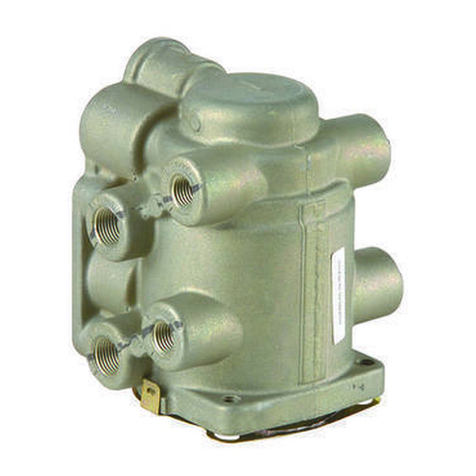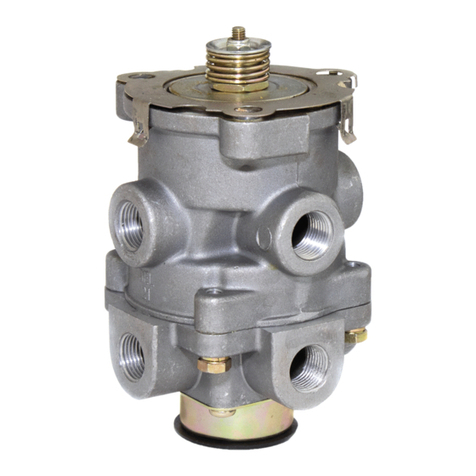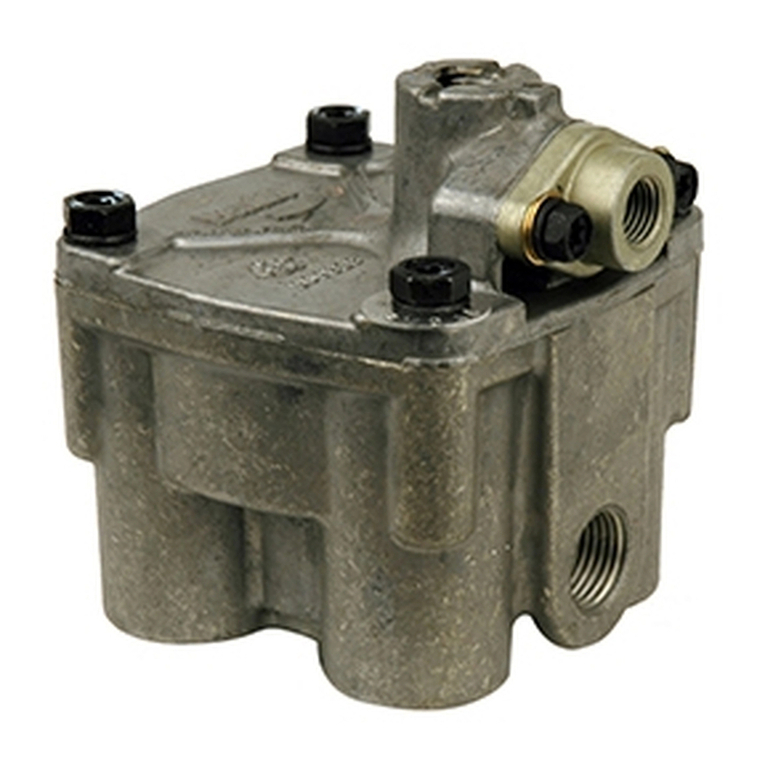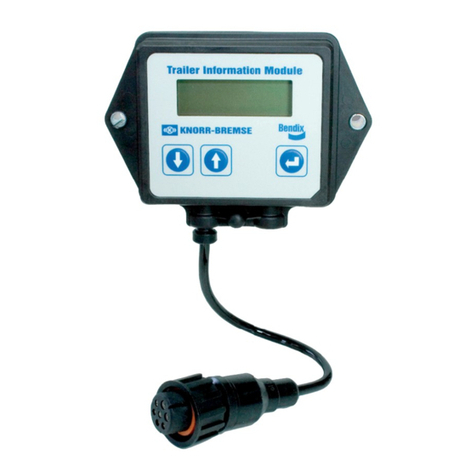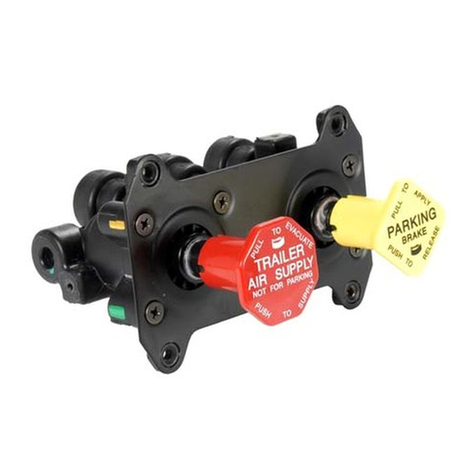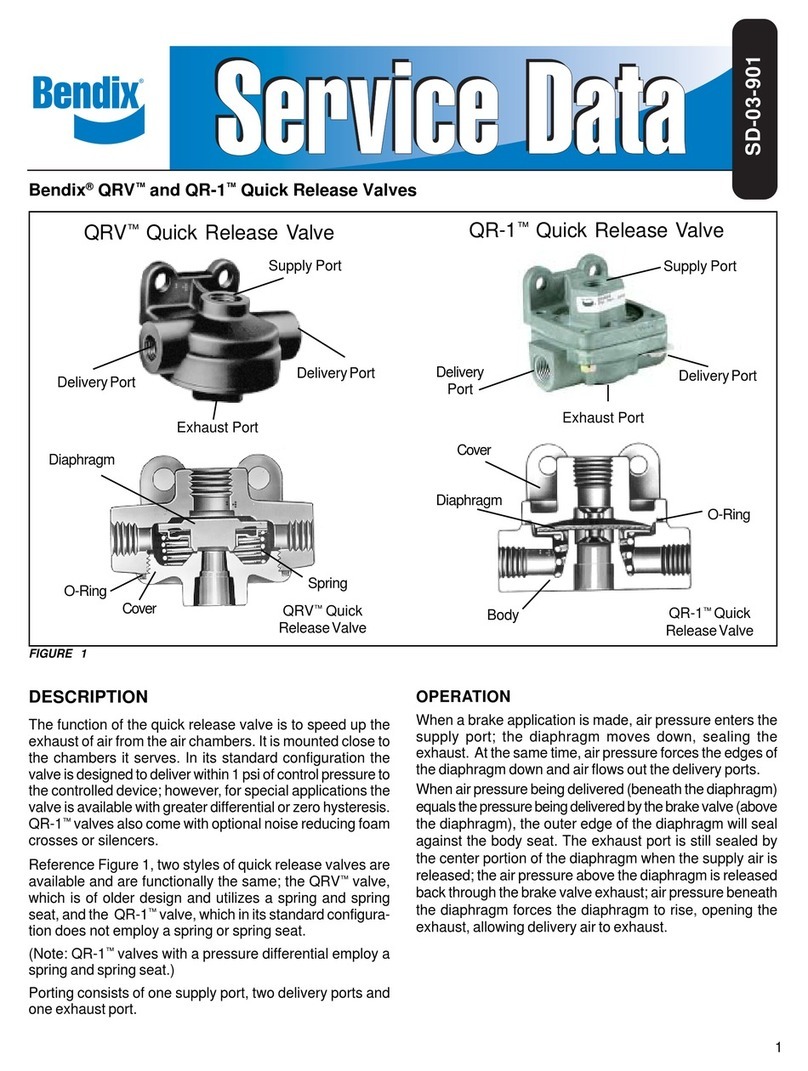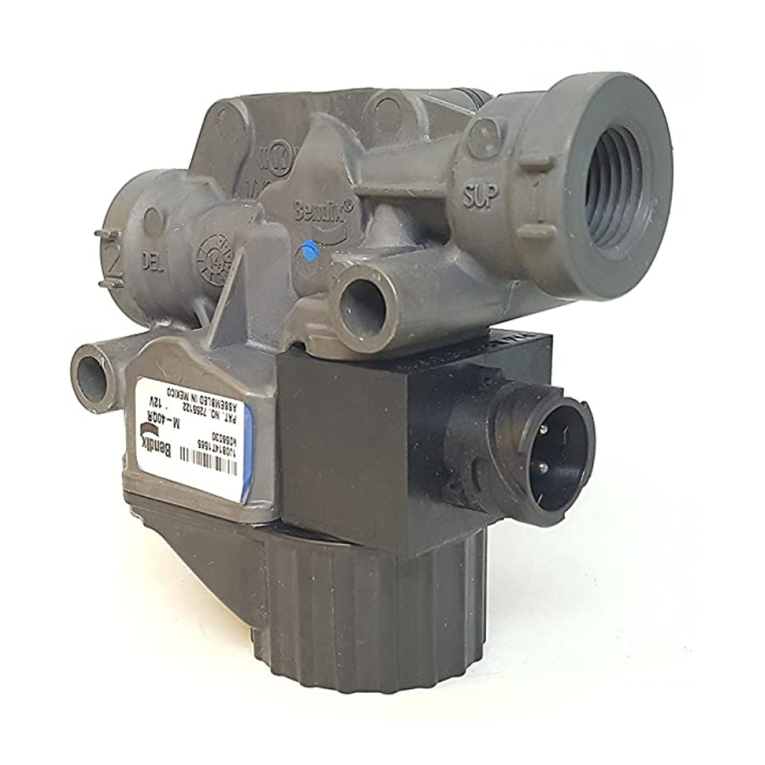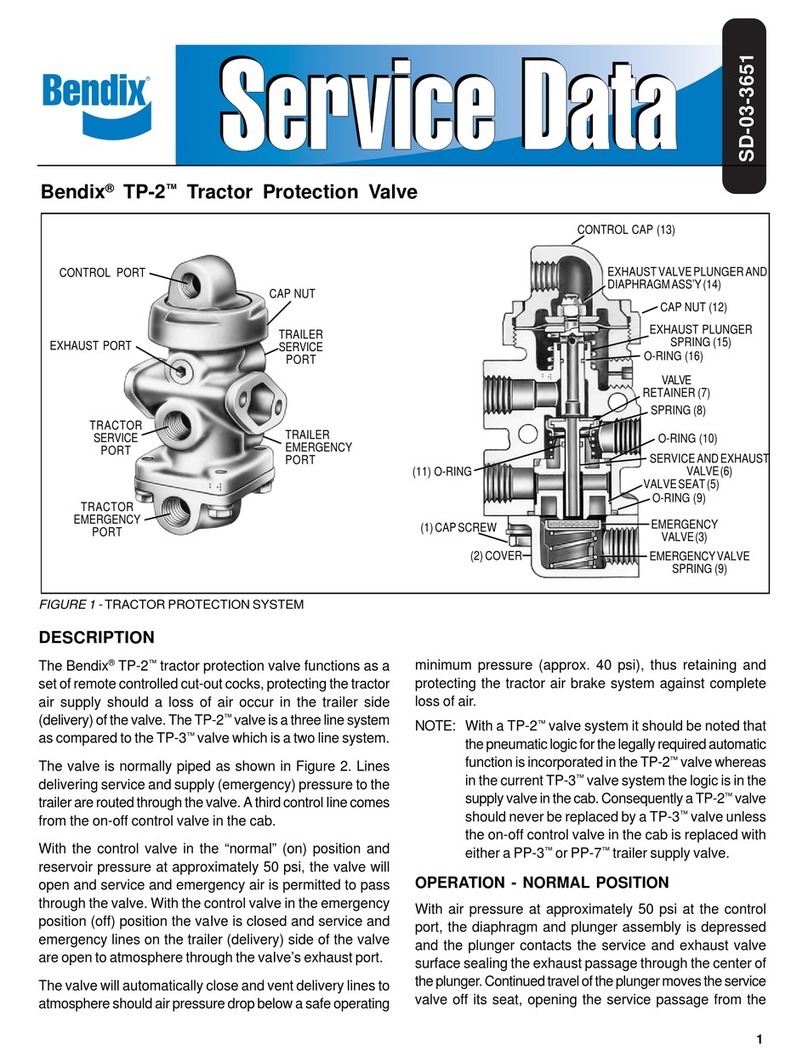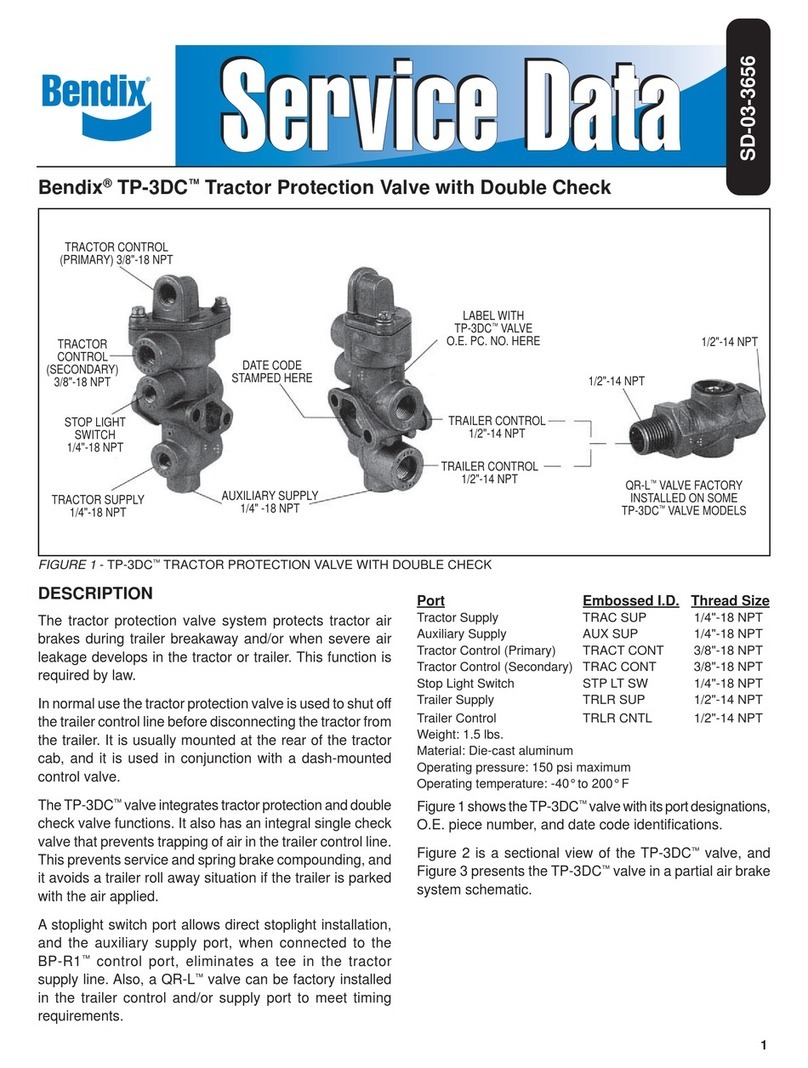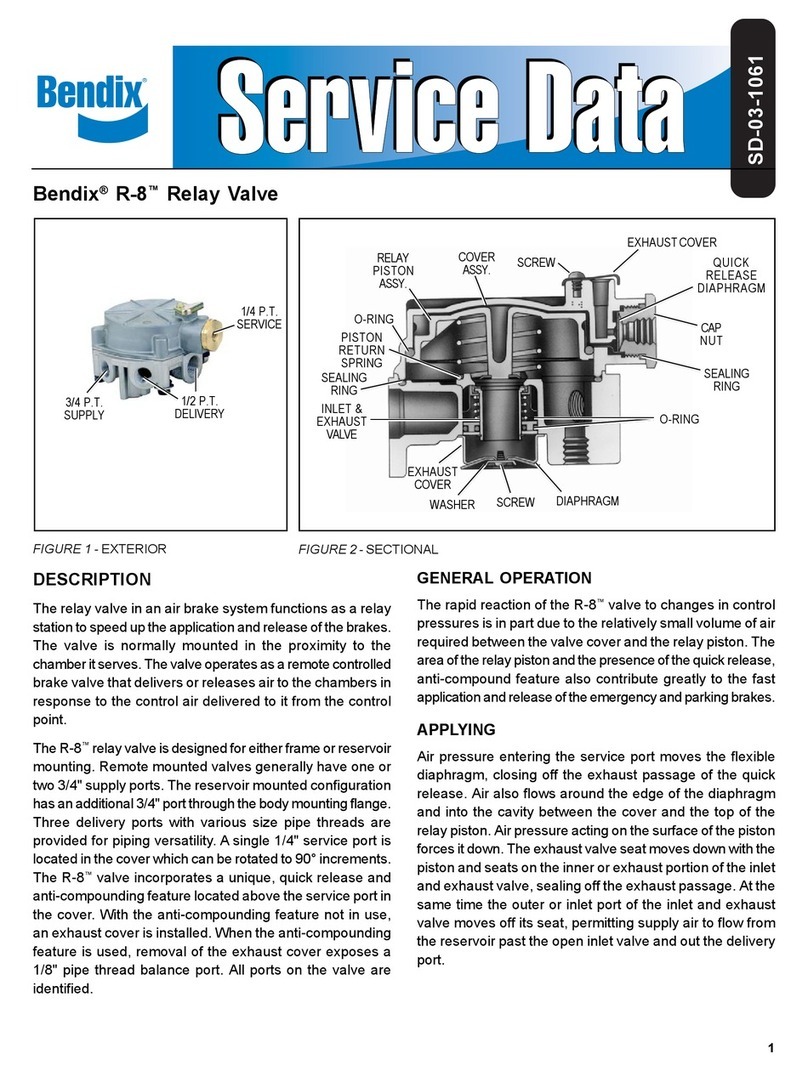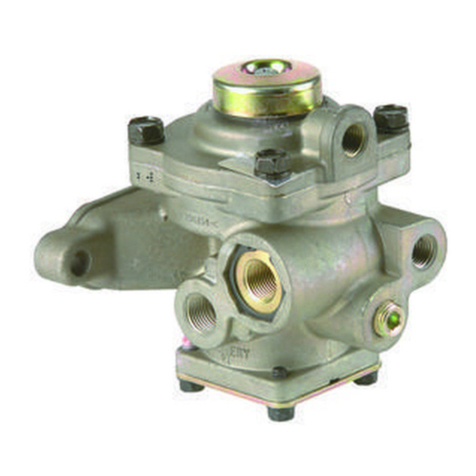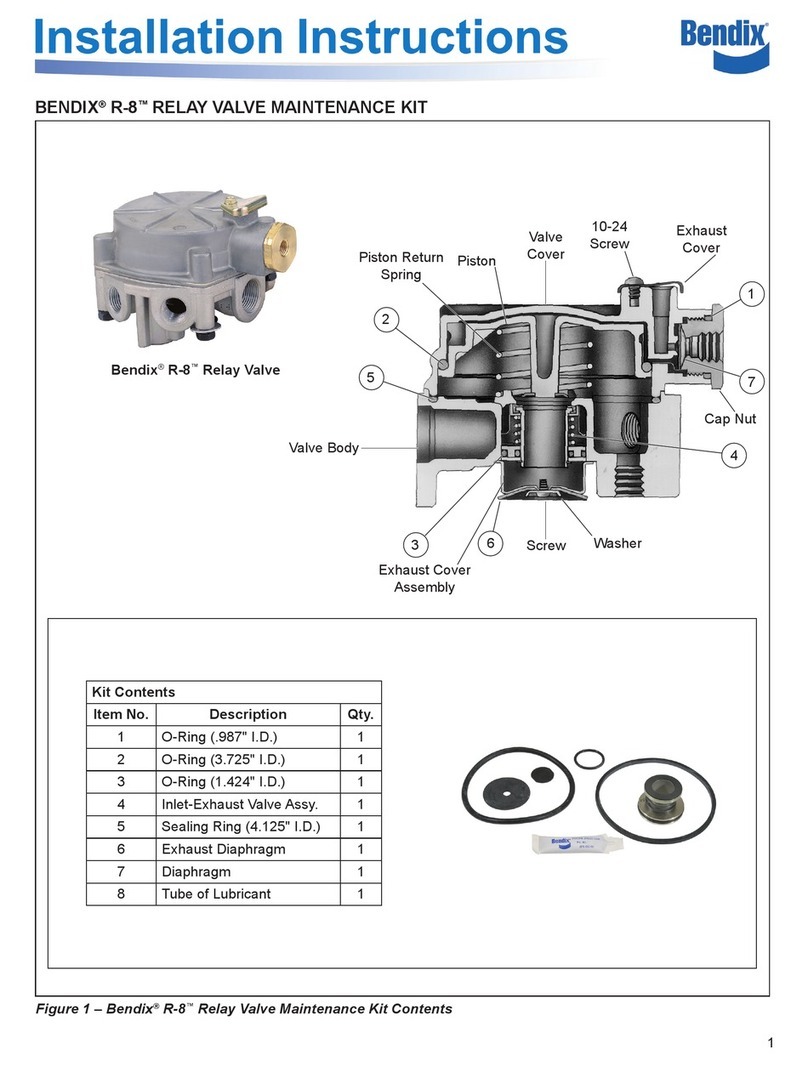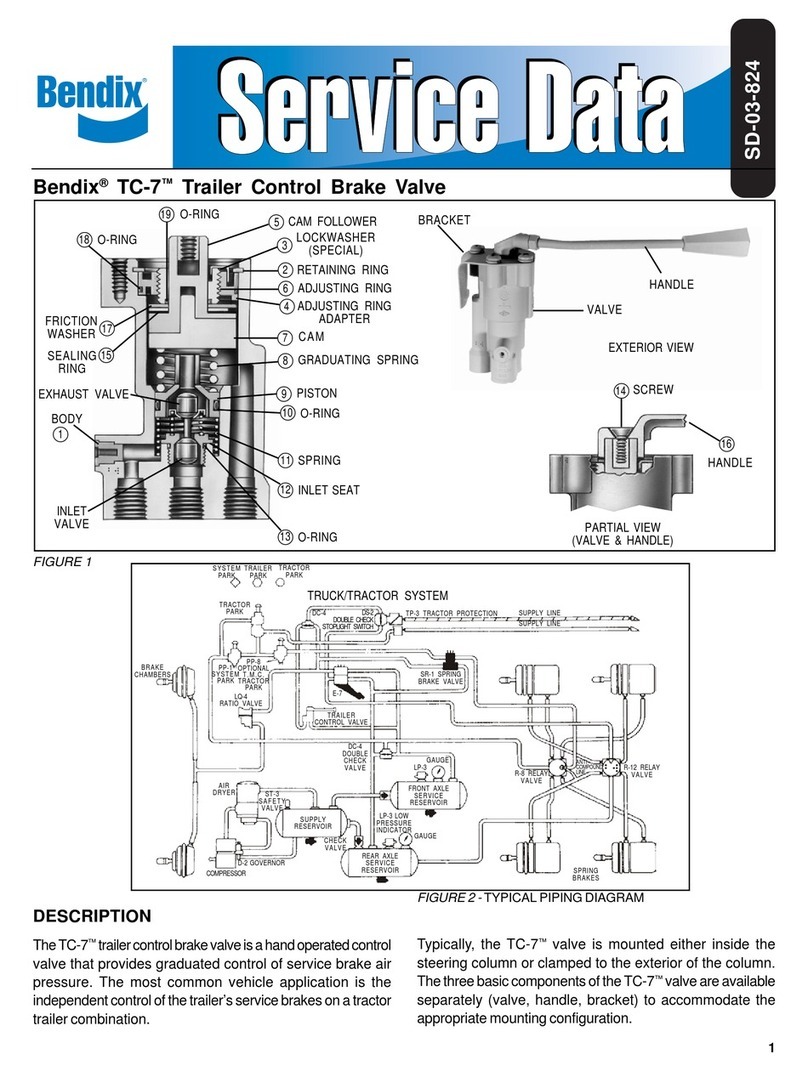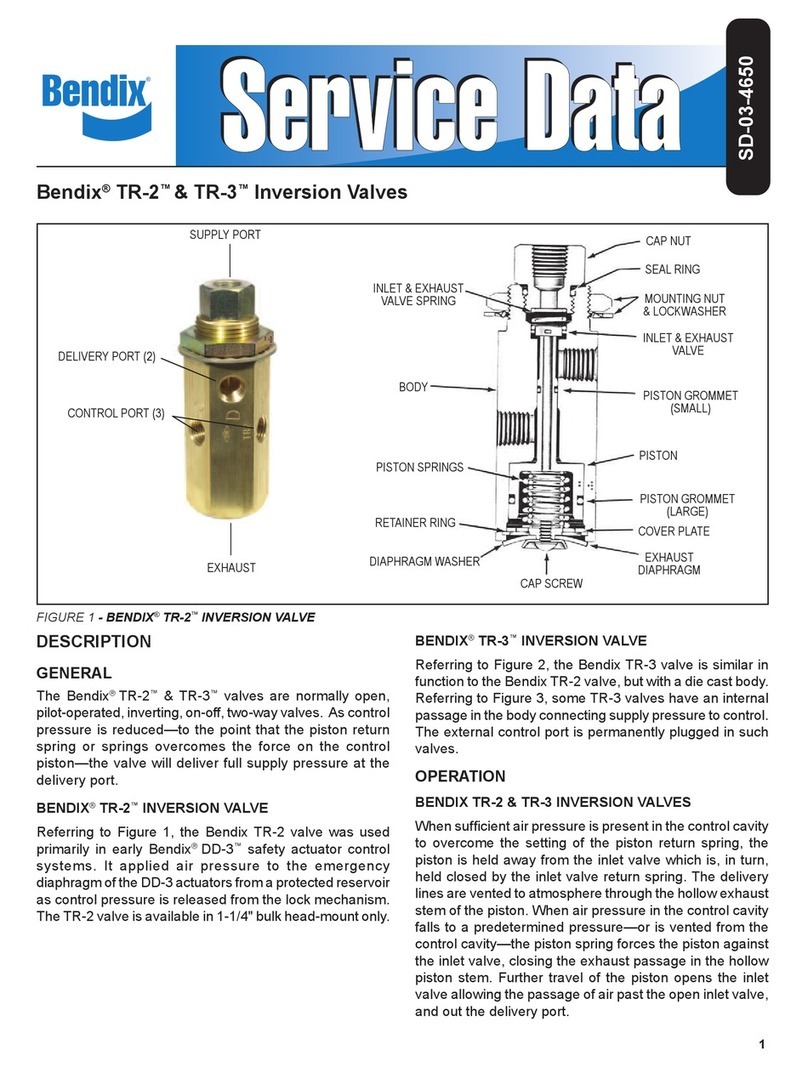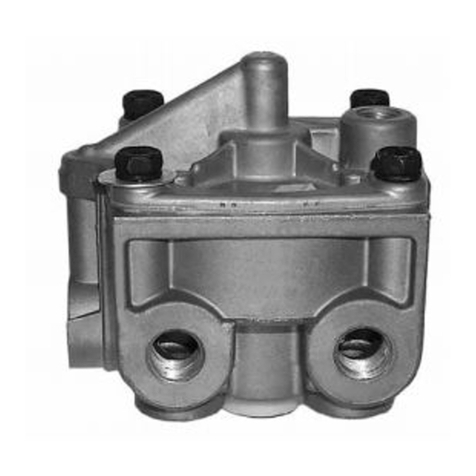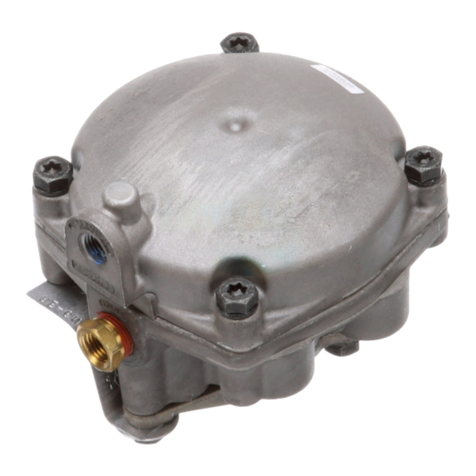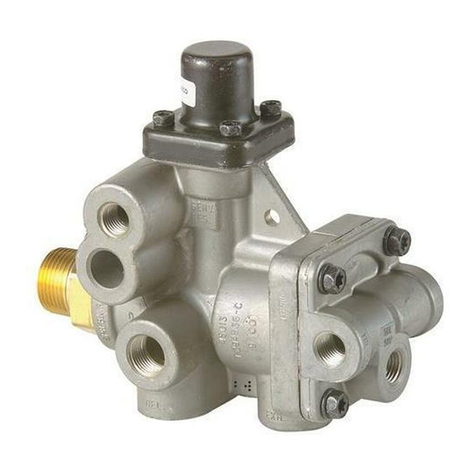
4
SERVICE CHECKS
OPERATING CHECK
Checkthe delivery pressure of bothprimaryandsecondary
circuits using accurate test gauges. Depress the treadle to
several positions between the fully released and fully
applied positions, and check the delivered pressure on the
testgaugesto see that it varies equally and proportionately
with the movement of the brake pedal.
After a full application is released, the reading on the test
gauges should fall off to zero promptly. It should be noted
thatthe primary circuit delivery pressure will be about 2PSI
greater than the secondary circuit delivery pressure with
bothsupply reservoirs at the same pressure.Thisisnormal
forthis valve.
Important:Achange invehicle braking characteristics or a
low pressure warning may indicate a malfunction in one or
the other brake circuit, and although the vehicle air brake
system may continue to function, the vehicle should not be
operated until the necessary repairs have been made and
bothbraking circuits, includingthepneumatic and mechani-
caldevices,areoperatingnormally.Alwayscheckthevehicle
brake system for proper operation after performing brake
workand before returning the vehicle to service.
LEAKAGE CHECK
1. Make and hold a high pressure (80 psi) application.
2. Coatthe exhaust portandbody of thebrakevalve witha
soap solution.
3. Leakage permitted is a 1” bubble in 3 seconds. If the
brakevalvedoesnotfunctionasdescribedaboveorleak-
age is excessive, it is recommended that it be replaced
withaneworremanufacturedunit,orrepairedwithgenu-
ine Bendix parts available at authorized Bendix parts
outlets.
REMOVAL
1. Check the vehicle wheels or park the vehicle by
mechanical means. Drain all air system reservoirs.
2. Identify and disconnect all supply and delivery lines at
thebrakevalve.
3. Removethe brake valve and treadle assembly from the
vehicle by removing the three cap screws on the outer
bolt circle of the mounting plate. The basic brake valve
alonecanberemovedbyremovingthethreecapscrews
on the inner bolt circle.
DISASSEMBLY (Figures 3 and 4)
1. If the entire brake valve and treadle assembly was re-
moved from the vehicle, remove the three cap screws
securing the treadle assembly to the basic brake valve.
2. Remove the screw (9) securing the exhaust diaphragm
(10)and washer (11) to the exhaust cover (12).
3. Remove the four screws that secure the exhaust cover
(12) to the lower body.
4. Removethe Secondary inlet and exhaust valve assem-
bly (13) from the lower body.
5. Removethefourhexheadcapscrewssecuringthelower
body to the upper body and separate the body halves.
6. Removethe rubber seal ring (14) from the lower body.
E-6™VALVE ONLY (Figure 3):
7. Whileapplying thumb pressure to theprimarypiston,lift
out and up on the three lock tabs of the primary piston
retainer(15).
E-10™VALVE ONLY (Figure 4):
8. A. Whiledepressing spring seat (7), remove retaining
ring(8).
B. Remove spring seat and coil spring (5).
9. Using a 3/8" wrench, hold the lock nut (16) on the
threaded end of the stem (17) in the primary piston (2).
Inserta screwdriver in theexhaustpassagethrough the
center of the valve and engage the slotted head of the
stem.
10. Removelocknut(16),spring seat(18), stemspring (19),
primary piston (2), and primary piston return spring (6).
Removeo-ring(34).
11. Remove adapter (1). Remove o-ring (4) from adapter.
Caution:Before proceeding withthedisassembly, refer
toFigure 4 and note that thelocknutand stem are used
to contain the primary piston return spring, stem spring
andthe relaypistonspring. Thecombined forceofthese
springs is approximately 50 pounds and care must be
taken when removing the lock nut as the spring forces
will be released. It is recommended that the primary
piston and relay piston be manually or mechanically
contained while the nut and stem are being removed.
E-6™VALVE ONLY:
12. Usinga screwdrivertorestrainthe stem,asin stepnine,
remove the lock nut (16), spring seat (18) and stem
spring(19).
13. Remove the relay piston (20), relay piston spring (21),
primarypistonandprimary pistonreturn spring(23)from
the upper body. Use care so as not to nick seats.
Note: CertainE-6™valvesdonot have a relay pistonspring
(21). If none is found, none should be replaced.
14. On valves manufactured after October 7,1976, a small
washer (24) will be found in the cavity in the lower side
of the primary piston (22).
15. Disassemble the primary piston by rotating the spring
seatnut(25)counterclockwise. Separatethe springseat
